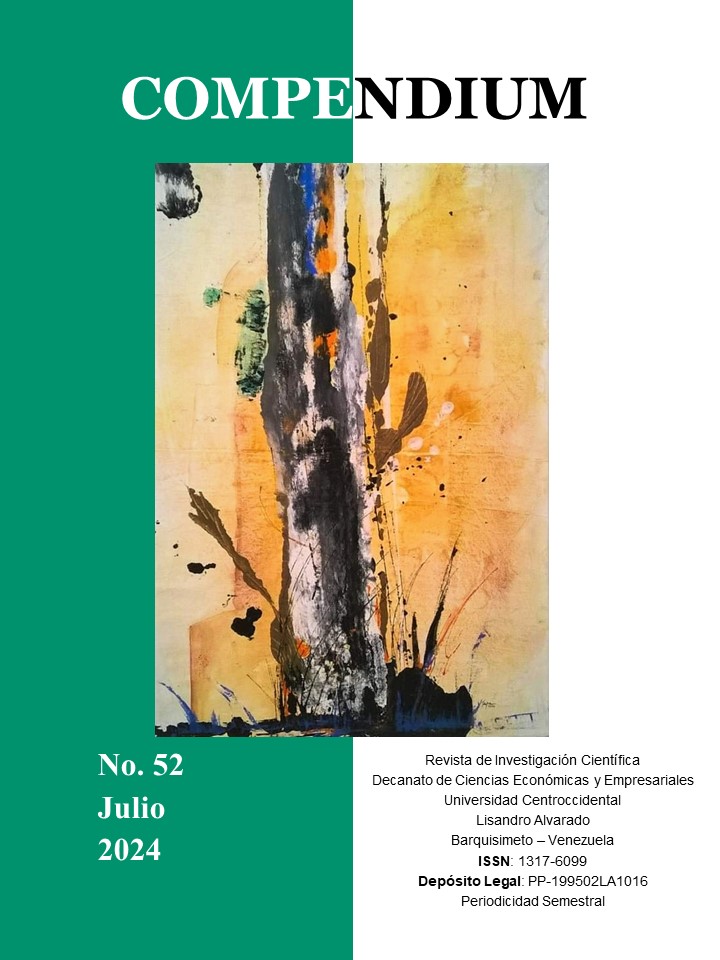Money as a contingency factor: an approach under various theories
DOI:
https://doi.org/10.5281/zenodo.14649670Keywords:
contingency, money, incentives, motivation, theoriesAbstract
This essay presents a reflection on the absolute and relative impact of money as a motivational factor at work, leaving aside the apparent superficiality with which it has been treated as just another element in the respective process. It is estimated that not only does it maintain a priority weight as a motivational element, but under certain circumstances it can be instrumentalized as a “wild card or nutrient” for the satisfaction of another body of non-financial needs, as long as it is perceived that way by the person and/or the organization makes it known. Likewise, it is clear the existence of exceptions or exceptional scenarios that generate some gaps at the level of work to relativize its effect, without necessarily losing in some way its referent value in the activation and maintenance of behavior. For the analysis and respective reflections, use was made of specific theories on the topic, bibliographic reviews, unstructured interviews and support from the author's academic and work experience, which, complemented with other general theoretical approaches, seek to explain the scope of money in the organizational framework, without detriment to any other factors binding to the respective topic.
Downloads
References
Adams, S. (1965). Inequity in Social Exchanges. In L. Berkowitz (Ed.). Advances in Experimental Social Psychology (267-300). NY: Academic Press.
Alderfer, C. (1969). An Empirical Test of a New Theory of Human Needs. Organizational Behavior and Human Performance, 4 (2), 142-175.
Alonso, C. y Aguilera, A. (2021). Relación entre satisfacción laboral y clima organizacional: un metaanálisis. Apuntes de Psicología, 39 (1), 27-37.
Berle, A. y Means, G. (1932). The modern corporation and private property. New York: Macmillan.
Blum, M. y Naylor, J. (1976). Psicología industrial: sus fundamentos teóricos y sociales. México: Editorial Trillas.
Chandler, A. (1962). Strategy and structure, chapters in the history of the industrial enterprise. Boston: MIT Press.
Coase, R. (1937). The nature of the firm. Económica, 4 (16), 386-405.
Eisenhardt, K. (1988). Agency and institutional explanations of compensation in retail sales. Academy of Management Journal, 31, 488-511.
Herzberg, Frederick; Bernard Mausner y Barbara Snyderman (1959). The Motivation to Work. NY: John Wiley & Sons.
Jensen, M. y Meckling, W. (1976). Theory of the firm: Managerial behavior, agency cost and ownership structure. Journal of Financial Economics, 3 (4), 305-360.
Jones, M. (1955). Introduction. En M.R. Jones (ed.), Nebraska Symposium on Motivation. Lincoln: University of Nebraska Press.
Lawrence, P. & Lorsch, J. (1967). Organization and environment. Managing differentiation and integration. Boston: Harvard University.
Leavitt, H. (1976). Psicología Gerencial. 1ra. Edición. Buenos Aires: Ediciones Contabilidad Moderna.
Locke, E. (1968). Toward a Theory of Task Motivation and Incentives. Organizational Behavior and Human Performance, 3(2), 157-189.
Locke, E. & Latham, G. (2004). What Should We Do About Motivation Theory? Six Recommendations For The Twenty-first Century. Academy of Management Review, 29 (3), 388-403.
March, J. & Simon, H. (1980). Teoría de la Organización. NY. Editorial Ariel.
Maslow, A. (1943). A Theory of Human Motivation. Psychological Review, 50 (4), 370-396.
McClelland, D. (1971). Motivational Trends in Society. Morristown, NJ: General Learning Press.
Mayo, E. (1972). Problemas humanos de una civilización industrial. Buenos Aires: Edit. Nueva Visión.
Mullins, L. (2005). Management and Organizational Behaviour. 7th Edition. Edimburgo: Prentice Hall.
Neisser, U. (1967). Cognitive psychology. Englewood Cliffs: Prentice-Hall.
Páez, D.; Fernández, I.; Basabe, N. & Grad, H. (2001). Valores Culturales y Motivacionales: Creencias de Auto-Concepto de Singelis, Actitudes de Competicion de Triandis, Control Emocional e Individualismo-Colectivismo Vertical-Horizontal. Revista Electrónica de Motivación y Emoción (REME), 4, 8-9.
Porter, L. (1961). A study of perceived need satisfactions in bottom and middle management Jobs. Journal of Applied Psichology, 45, 1-10.
Raffino, Equipo editorial, Etecé (2022). Pirámide alimenticia. Enciclopedia Concepto. Recuperado de: https://concepto.de/piramide-alimenticia/
Robbins, S. (1999). Comportamiento Organizacional. Conceptos, Controversias, Aplicaciones. 8va. edición. México: Prentice Hall.
Ross, S. (1973). The Economic Theory of Agency: The principal´s problem. American Economic Review, 63 (2), 134-139.
Sánchez, C. (2008). Motivación, satisfacción y vinculación. ¿es gestionable la voluntad de las personas en el trabajo? Acción Psicológica, 5(1), 9-28.
Vroom, V. (1964). Work and Motivation. NY: Wiley.
Vroom, V. (1970). Industrial Social Psychology. En Vroom, V. & Deci, E., Management and Motivation (91-106). Tennessee: Penguin Books.
Wernerfelt, B. (1984). A resource-based view of the firm. Strategic Management Journal, 5 (2), 171-180.
Published
How to Cite
Issue
Section
Copyright (c) 2025 Alberto Mirabal

This work is licensed under a Creative Commons Attribution-NonCommercial-NoDerivatives 4.0 International License.




